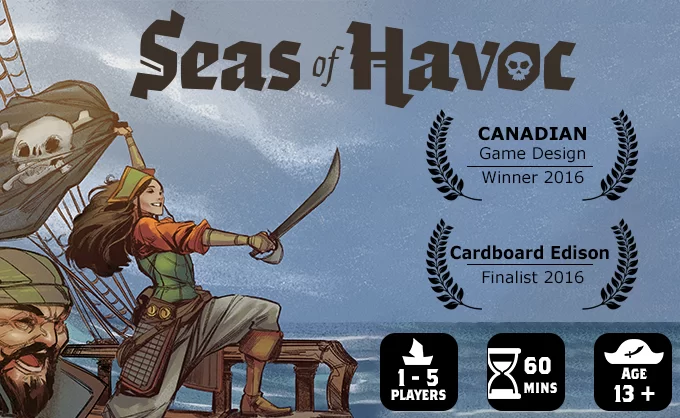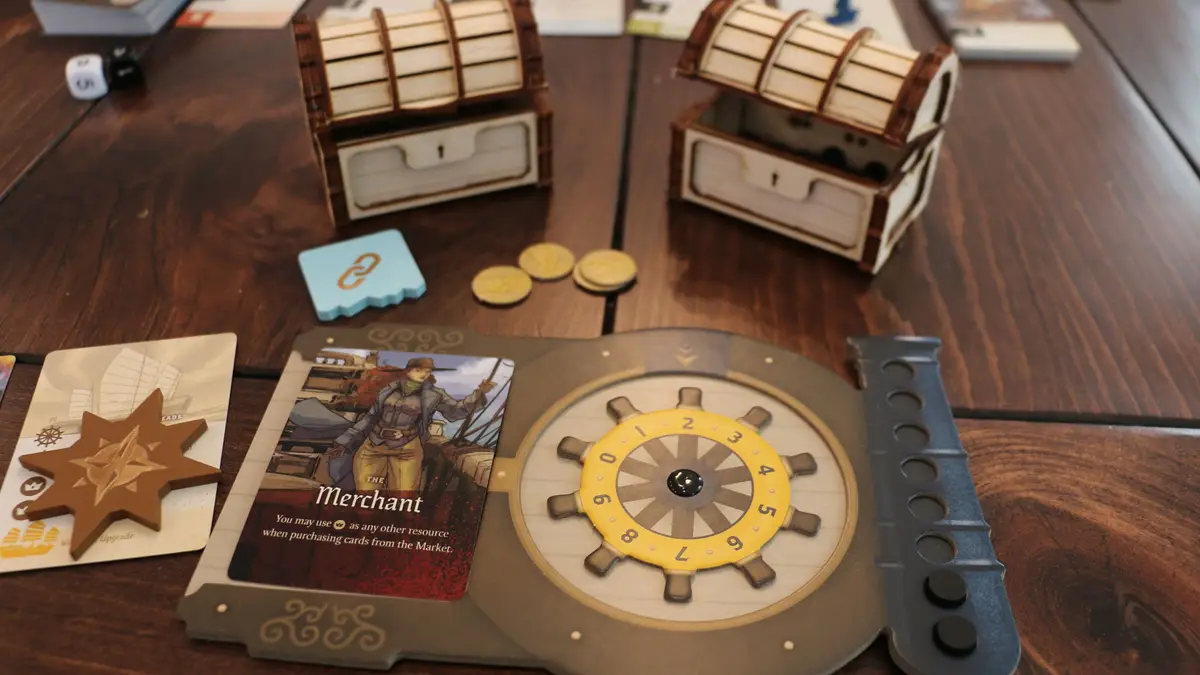Seas of Havoc Board Game Review
There are a ton of different genres of board games available, including deck building, worker placement, area control, and more. Very often, games choose one of these features and build an entire experience around that. Seas of Havoc went a different route. Combining worker placement, deck building, and a quasi area-control mechanism, they have created one of my favourite experiences of the past couple years.
How to Play
In Seas of Havoc, players will play the game across two phases, the Island Phase and the Sea Phase, with the ultimate goal of having more points than their opponents when the game ends. The game ends when the predetermined damage deck is completely empty.
The Island Phase
During the Island Phase, players will use their skiffs to visit islands and collect various resources, buy cards, and or get the first player marker. This is the worker placement portion of the game. Players will need to decide what items they will need to be most successful during the sea phase, or to allow them to purchase market cards at the end of the island phase.
The various locations around the board provide players with sails (marked on their ship wheel on their player board), cannon balls which are stored in their cannon, and coins which could be required for specific cards, or can be a substitute for another resource when making a purchase. Additionally, there is an island location that allows you to upgrade your ship, and location that lets you swap resources, and 4 locations that allow you to take a coloured flag that will provide you ongoing bonuses if you have the right cards in your hand.
Some players may opt to buy cards from the 5 face up market cards, and if they wish to do this, they will place their skiff on one of the cards, and purchase it at the end of the round. Once a card has been saved by one person during the Island Phase, other players cannot take that card. Once all the cards have been purchased, players move onto the Sea Phase!
The Sea Phase
During the Sea Phase, players use 4 cards in their hands – and potentially any additional cards they received via the market or abilities – to perform actions on a central board. As part of the game setup, a number of rocky islands, shipwrecks, whirlpools, and gusts were placed on the board, along with a ship in a specific direction for each player. Using their cards, players can move their ships (as depicted on the card), fire at each other, collect loot from shipwrecks, or get in trouble on rocky islands, gusts, and whirlpools.
Here is where building a good deck comes in handy, because if you don’t have the right cards available to you, you won’t be able to perform the actions you need. Should you get hit by a shot from another player, not only will they get points for doing so, but you will have to add a damage card to your deck which is worth -1 points at the end of the game. This damage card will now dilute your deck making your hand potentially worse in future rounds, although you can get rid of this card (and we suggest you do)!
Play continues until all the damage cards have been given out, at which point the players tally up their scores. The player with the most points wins!
Do I Recommend It?
As I said off the top, Seas of Havoc is easily one of my favourite games from the past few years. I enjoy a great ship / pirate theme, and this game really hits that feeling when visiting islands and patrolling your ship around the ocean. Getting into position for the perfect shot is really satisfying, although getting shot at is much less fun. While this game has a “take that” feel to it, a damage card is bad, but never so bad that you feel like people are purposefully going after you!
Each player also gets a unique captain and ship upgrades, and these elements really can change the feel of the game. Even though I was playing the same game, using different captains each time pushed me towards a different strategy, and I really enjoy that. Games where you always do the exact same thing don’t interest me for long, but with so many different captains to choose from, I really enjoy this one.
The worker placement portion of the game is fairly simplistic, but still enjoyable. After playing a few times, this feels like a game I could teach someone in just a few minutes, and I would argue it might be a great game to teach players about worker placement and deck building mechanics. Often, these “gateway” games are pretty lacklustre and get a bit boring, but several games into Seas of Havoc and I cannot wait to play more, and teach it to new people.
There really is only one thing I’m not crazy about in this game, and it isn’t about the gameplay at all. I found the rulebook to be a bit cumbersome to work through, not always being as clear as our gaming group would want it to be. Hopefully a few things can be tweaked in future auditions of the game, or an updated rulebook printed online somewhere.
Aside from that, this is a game I can easily recommend. The artwork is great, the components are phenomenal, and the gameplay is superb. If you are looking for an experience that you can bring to the table again and again, this is an easy recommendation from us!





